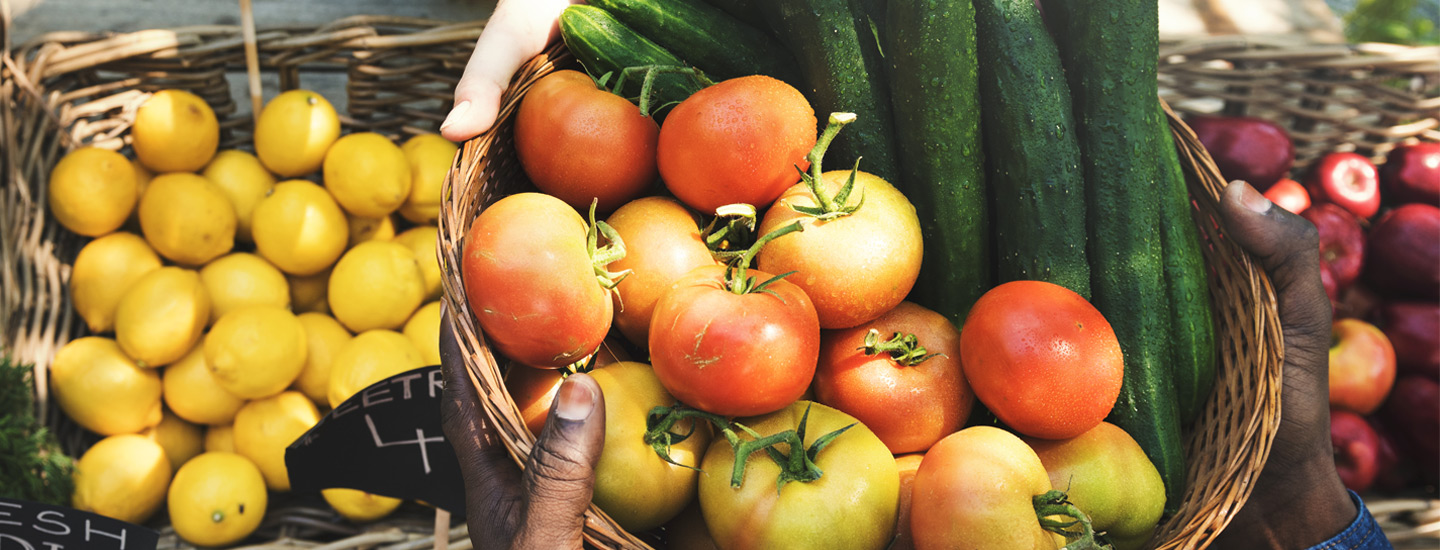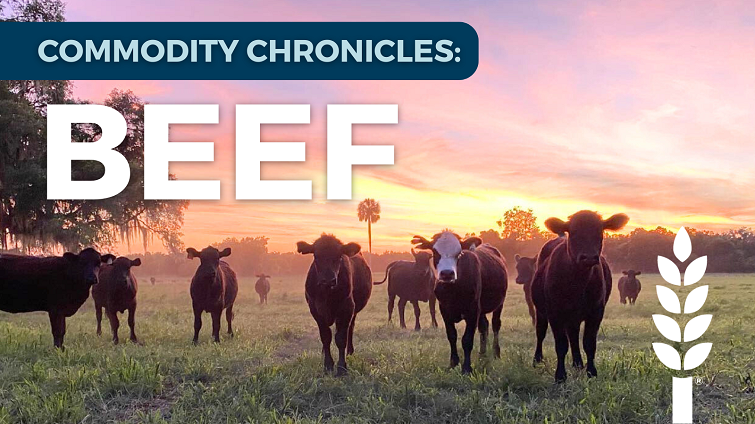The Crucial Impact of Florida Beef on Feeding Our Neighbors
Florida might evoke images of beaches and citrus, but the Sunshine State boasts a 500-year-old cattle industry with deep roots in its history and identity. Today, that ancient industry is fueling a modern mission: feeding Florida’s food-insecure population.
Here is an inside look at the history of Florida beef, the story of one dedicated rancher, Joe Planz of Providence Cattle, and how high-quality protein is reaching those who need it most.
Deep Roots
The cattle industry in Florida began when Andalusian cattle arrived with Ponce de Leon during his second expedition to the New World in 1521. Since then, the industry has evolved and the way ranchers operate in Florida is a bit different than in western states. Florida is predominantly a “cow-calf state”, meaning ranchers raise cows and when their calves reach about six to eight months of age, they are typically sent West, taking advantage of other region's feed resources.
A growing number of ranchers, however, are retaining calves in Florida to market beef directly to consumers. The state's forages and commitment to green space preservation support this foundation. Beyond economics, the cattle industry plays an important role in stewarding Florida's green spaces, protecting the environment, wildlife, and water.
Providence Cattle’s Calling: Joe Planz's Journey
To learn more about these local operations that have partnered with Farmers Feeding Florida, we spoke with Joe Planz, the owner of Providence Cattle. He returned to agriculture after a long career away from the farm. Joe started working on dairy farms in rural Pennsylvania when he was just 13. He later spent 35 years in hospitality until the 2008 recession.
His return to ranching began when he helped a neighbor whose dairy farm was in need. After volunteering to milk cows for about 18 months, the neighbor gave him bull calves to raise for beef, sparking his focus on grass-fed, grass-finished beef. Joe began with 3 to 4 cows, and about 15 years ago, he partnered with Clifton Chapman. The operation, which grew to about 150 animals, harvested approximately 650 head of grass-fed, grass-finished Florida beef last year.
For Joe and his wife, farming became a meaningful calling. He explained that the venture seemed providentially guided, leading them to the name Providence Cattle. “After visiting a friend's cattle ranch in Texas and reconnecting with my rural Pennsylvania roots, I began to see agriculture differently than when I was younger,” said Joe. “We named it Providence Cattle because it seemed like the stars aligned and this was the direction we were meant to go. Being shepherds of God's creatures that feed people is deeply fulfilling.”
A Mission Realized: Connecting Ranches to Food Banks
The idea to donate high-quality beef originated from a desire to help those who couldn't afford Providence Cattle's premium product, which is more expensive than conventional beef. Before COVID-19, Joe and his wife discussed how unfortunate it was that the people who could most benefit from their clean beef couldn't access it.
Joe first connected with Feeding Tampa Bay after seeing one of their trucks at a gas station. During the pandemic, when restaurants were closed, Joe and his wife reached out, proposing to donate culled cows for ground beef instead of sending them to livestock auctions. This initial connection was made with Peter Lenhart, the Director of Food Acquisition at Feeding Tampa Bay, and others. This successful relationship has flourished over the last five years.
The initial partnership was successful: another rancher, Ian Wallace, volunteered to donate the first cow, which yielded 800 pounds of ground beef and supplied the three Feeding Tampa Bay Trinity Cafes with beef protein for five days. The processing plant even offered to process the meat for free. Joe calculated that if just 62 cattlemen each donated one cow, they could keep every Trinity Cafe supplied with beef protein year-round.
While Providence Cattle was donating product in the Tampa area, the Feeding Florida network was working with Florida Cattleman’s Association to develop a statewide beef recovery model. Joe’s initial effort has since shaped how our statewide program can source Florida beef, and he was instrumental in collaborating with the Association’s task force to establish a detailed template for the donation program, expanding this work so all the food banks in the state could participate.
Understanding the Value of Beef: Nutrition and Cost
Beef is a highly valuable commodity. Its cost is high because it requires a longer production cycle—about three years from birth to harvest—compared to other food sources. This cycle involves significant investments in labor, feed, water, and health maintenance.
However, the nutritional value of beef is unmatched. Beef provides essential nutrients, including zinc, iron, and protein. The ground beef typically used in the donation program is 80-20. This composition is both nutritious and versatile, allowing it to stretch further. Just one pound of this ground beef can easily feed a family of four, creating meals like tacos, hamburgers, or stroganoffs.
For food banks, protein belongs at the center of the plate, and it is the single most expensive food for neighbors to purchase. Pete Lenhardt of Feeding Tampa Bay shared, “These relationships and the resulting donations are absolutely vital. The impact of partnerships like this on food banks and the communities we serve simply cannot be overestimated.”
Direct Impact on Food Banks and Communities
The ability to source local beef has a profound impact on food banks and the communities they serve. Florida has approximately 2.9 million food-insecure people, making these protein donations critically important. For Feeding Tampa Bay, these donations are an amazing source of generous donations, providing nourishing meals.
“When I became the Director of Procurement almost six years ago, the urgent need for donated protein was immediately evident,” shared Pete. “We've been incredibly fortunate to have a long-standing partnership with Joe Planz and Providence Cattle that has flourished for the last five years. And he was instrumental in establishing another crucial connection with Steelbach Restaurant. Both partners have since become amazing sources of generous donations, providing the main ingredient for countless, nourishing meals for those we serve.”
The impact is tangible:
- A single early donation of 18,000 pounds of ground beef supplied Tampa Bay’s Trinity Cafe for three and a half months.
- The donated beef allows talented chefs to create rich, hearty dishes, such as beef bolognese, which provides warmth and needed sustenance to guests at Trinity Cafe.
Expanding the Efforts
In 2025, championed by Florida Agriculture Commissioner Wilton Simpson and Senate President Ben Albritton, the Florida Legislature made an investment to scale the Farmers Feeding Florida initiative, allowing it to expand beyond produce into Florida-produced protein commodities, including beef. Feeding Florida has streamlined the process for the Beef Recovery Program to make participation easy for producers.
Kayla Gonzales, Feeding Florida’s Agriculture Relations Coordinator, explained the process is designed to be as easy as possible, further developing our partnership with Florida ranchers and becoming another outlet for ranchers when they have cattle phasing out of production. Both donating or cost-sharing the animal is considered a charitable, tax-deductible donation for the market value of the animals donated.
“Ranchers contact us, we arrange processing, and they can either deliver directly to the processor or drop off at partner livestock markets. We handle transportation to processors if needed,” explained Gonzales. “After processing, the food bank picks up the beef, and farmers receive in-kind donation documentation for tax purposes. The whole process takes a couple of weeks, with the most complex part being getting the cattle loaded for transport.”
We asked Joe Planz about his message to other Florida ranchers, since he has helped shape this process through the experiences at his own ranch. Joe advised, “Look at the numbers. There are so many people in our communities who are underserved and their cattle could ensure their neighbors are fed. It's important to highlight that some of these people in need might be people they know who are too proud to ask for help.”
—----------------------------------------
Farmers Feeding Florida is accepting interest from producers year-round. To start, ranchers simply contact Kayla Gonzales at (352) 455-7933 or visit www.Farmers-FeedingFlorida.org to complete a short intake form.


